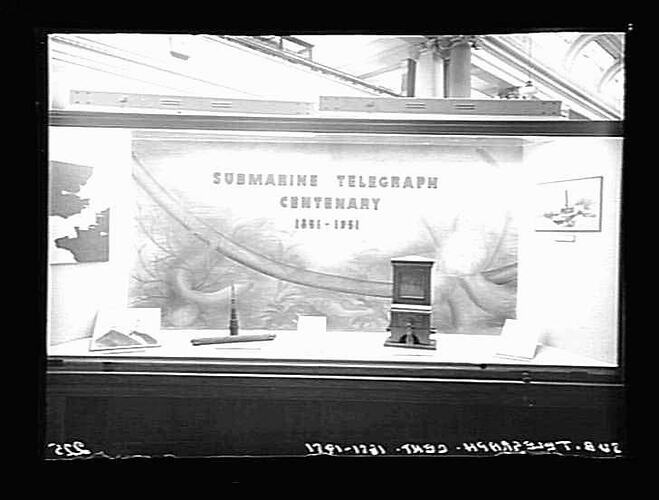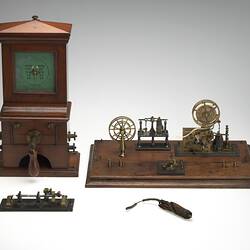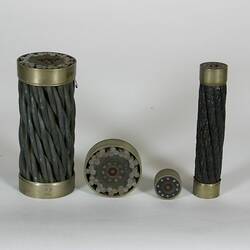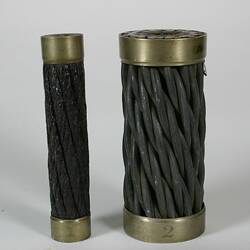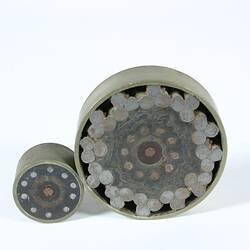These four cable samples show the structure of the Atlantic Submarine Telegraph cable laid in 1865, with a total length of some 2300 nautical miles. They were donated by the Telegraph Construction & Maintenance Co, London, England, who manufactured the 1865 cable.
The Telegraph Construction & Maintenance Co was formed in 1864 and dominated the manufacture of submarine telegraph equipment for the next century. It was involved in the laying of the early Atlantic cables, but not the first. The Company was formed by the merger of the Gutta Percha Company and Glass, Elliott & Company. These were two of the companies involved in the laying of the first Atlantic cable.
The first attempt to lay a trans-Atlantic submarine telegraph cable took place in 1857 but failed when the cable broke after about 330 nautical miles had been laid. A second attempt in 1858 was successful but the cable operated for only about a month before failing. In 1865 another attempt to lay a trans-Atlantic cable of improved design failed. Finally, in 1866 a cable was successfully laid. In addition, the 1865 cable was retrieved, repaired and completed so that there were two cables in operation by the end of 1866.
These four samples include a length and a cross-section of the main cable and a length and a cross-section of the shore end of the cable. The shore end is more heavily armoured than the main cable because of the greater possibility of damage close to shore by, for example, wave action or ships' anchors. The copper conductor at the centre of the cable was a strand of seven copper wires, each of No. 18 BWG (Birmingham Wire Gauge), or 1.24 mm diameter. The central wire was covered with a thick coating of Chatterton's Compound, a mixture of gutta percha and Stockholm tar, so that when the other six wires were wrapped spirally round it all gaps between the wires were filled. The conductor was then surrounded by a layer of pure gutta percha followed a layer of Chatterton's Compound. The process was repeated three more times to give a total of four layers of gutta percha and four layers of Compound. The core consisting of the conductor and its layers of insulation was wrapped with jute and the whole was armoured by wrapping ten iron wires of No. 13 BWG (2.41 mm diameter) spirally round the core. Each of these wires was itself covered with a jacket of tarred Manilla yarn. This completed the structure of the main cable. The shore end cable was further protected by an additional armouring of twelve strands of iron wire, each strand consisting of three wires of No. 2 BWG (7.21 mm diameter).
More Information
-
Keywords
-
Authors
-
Article types
